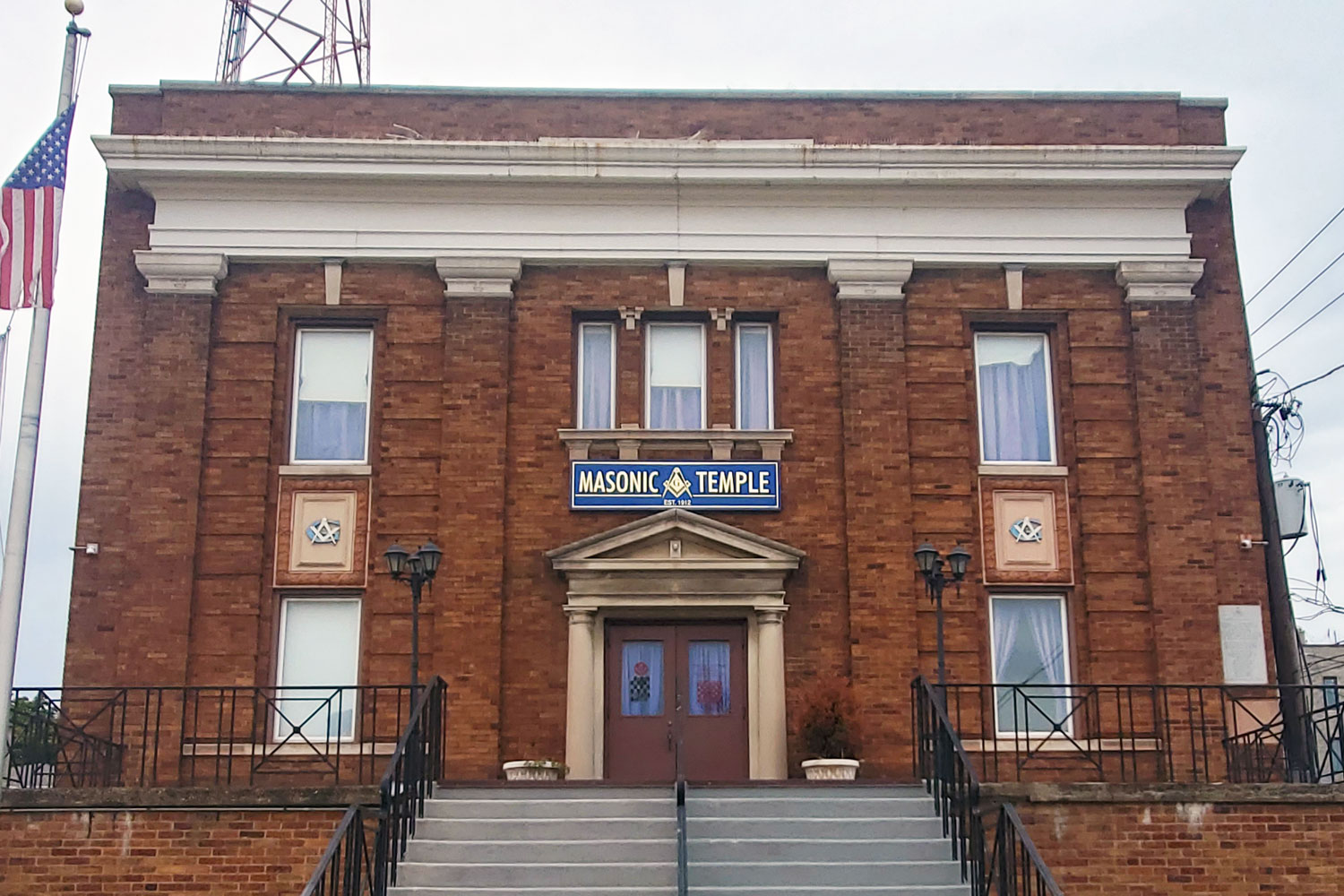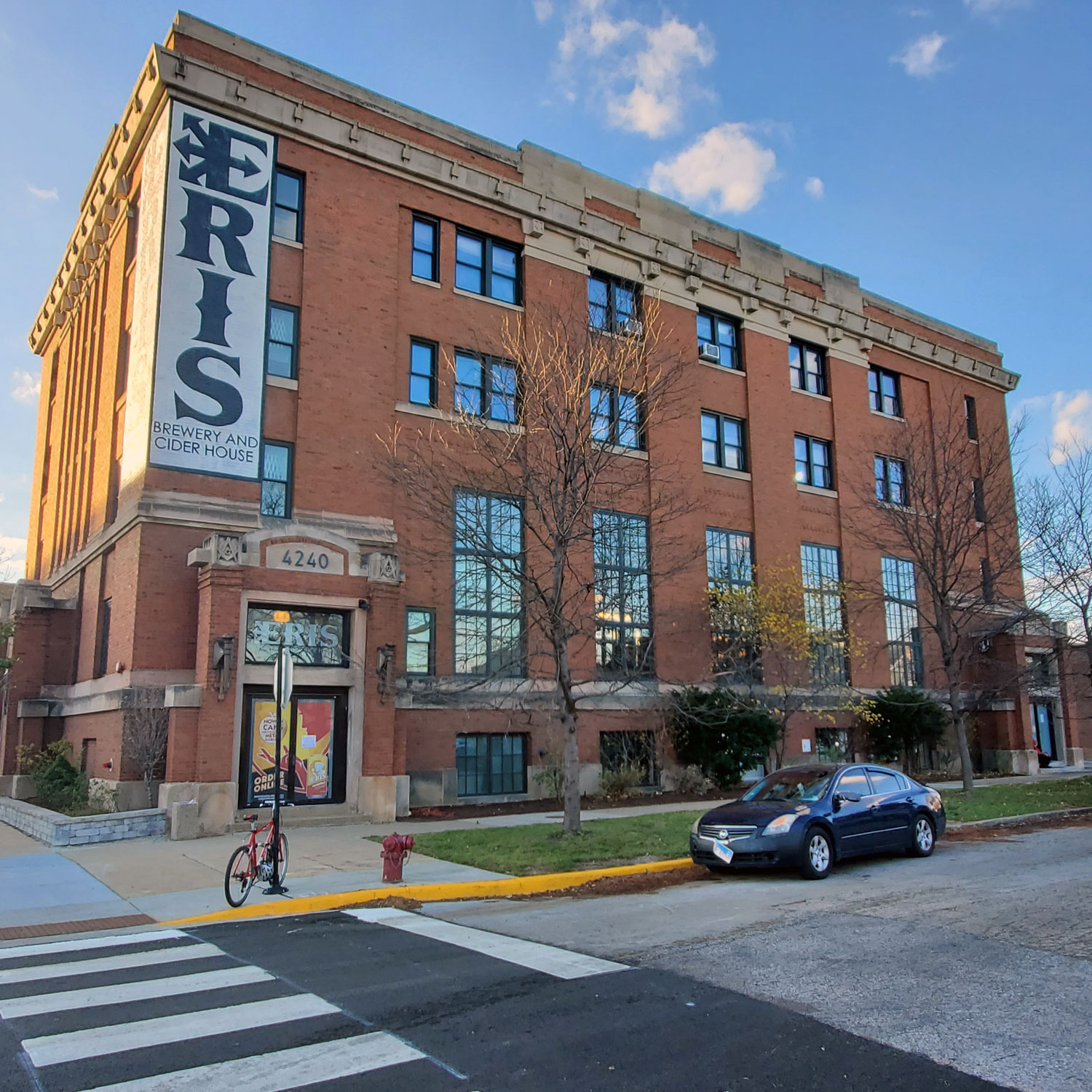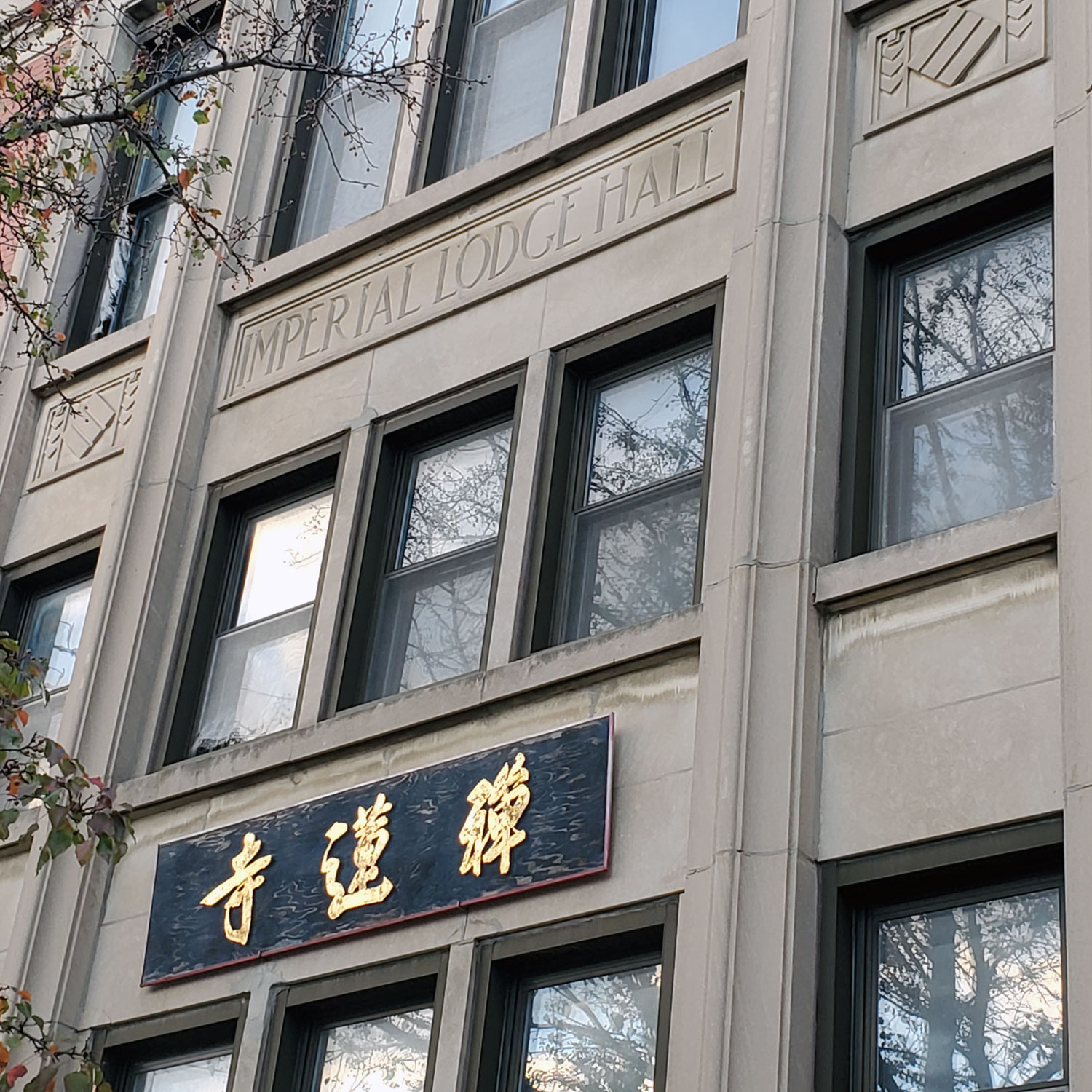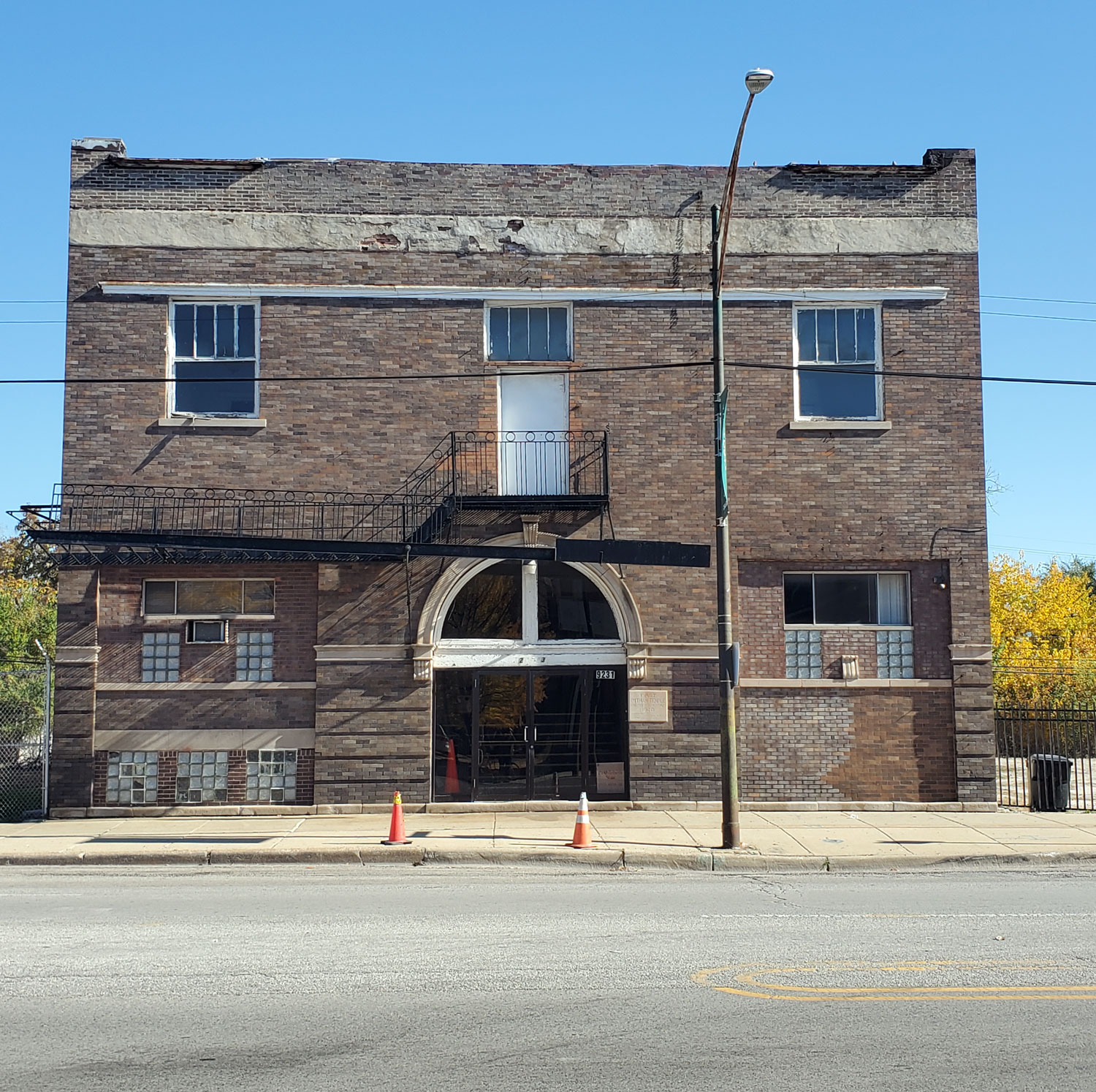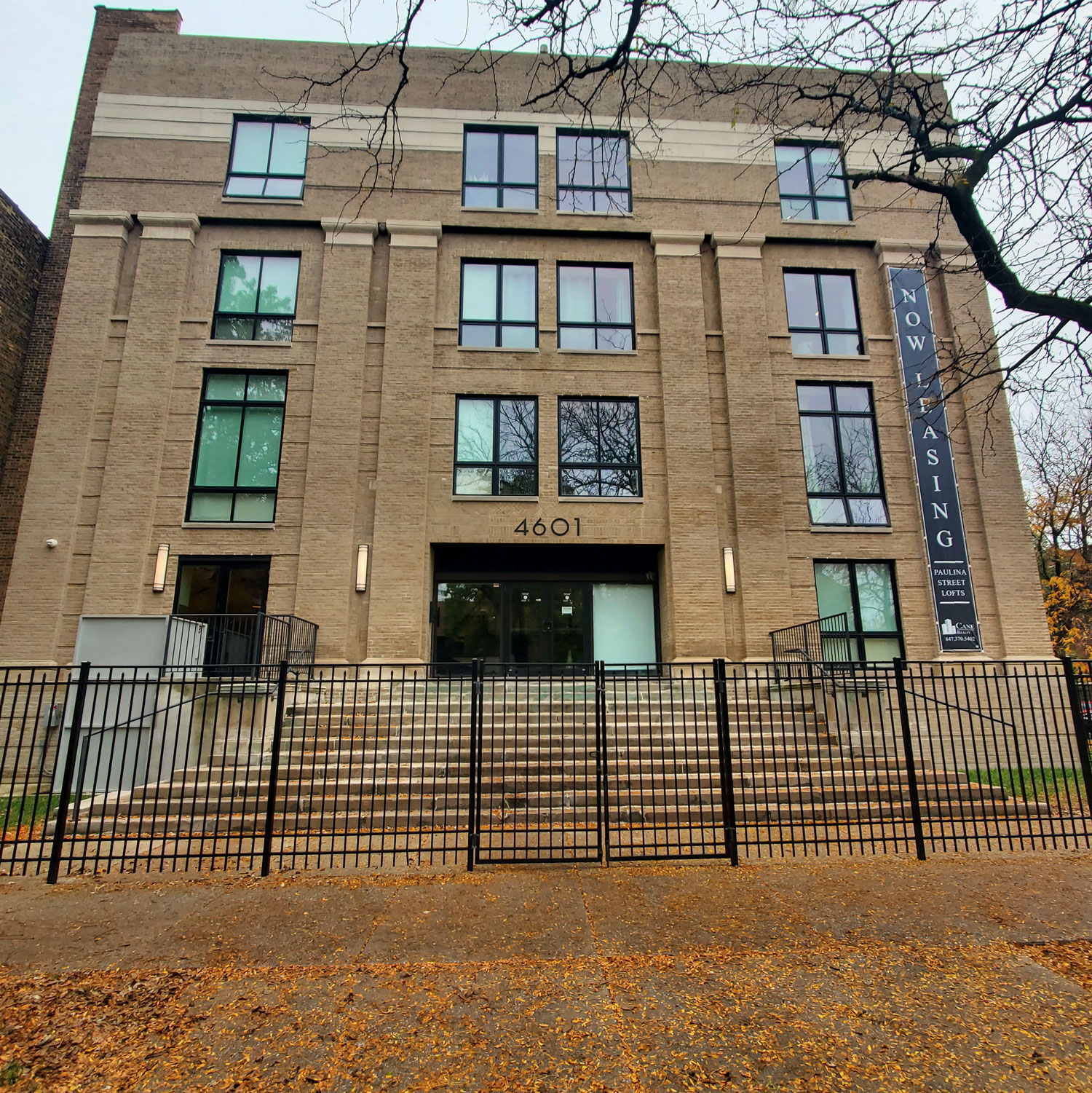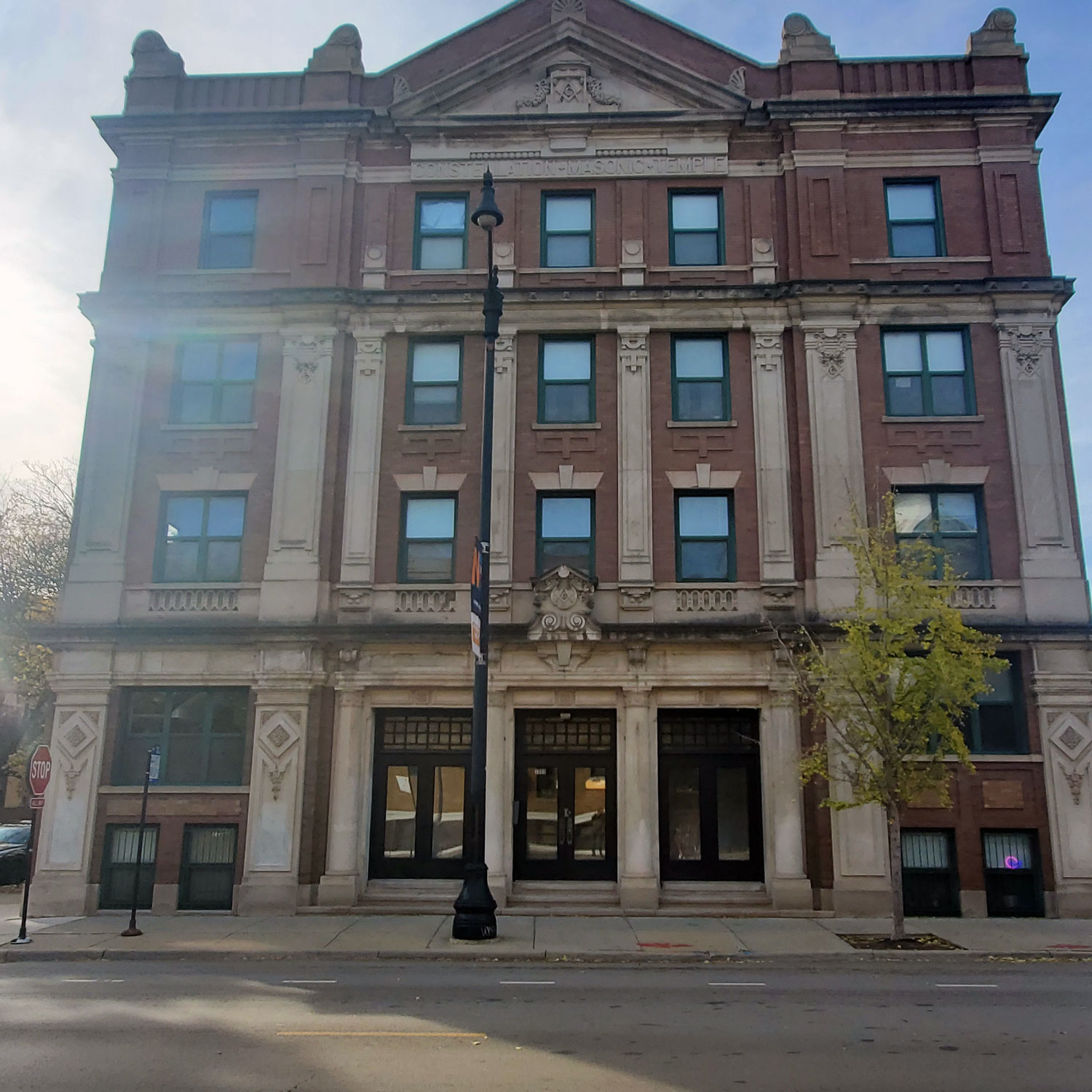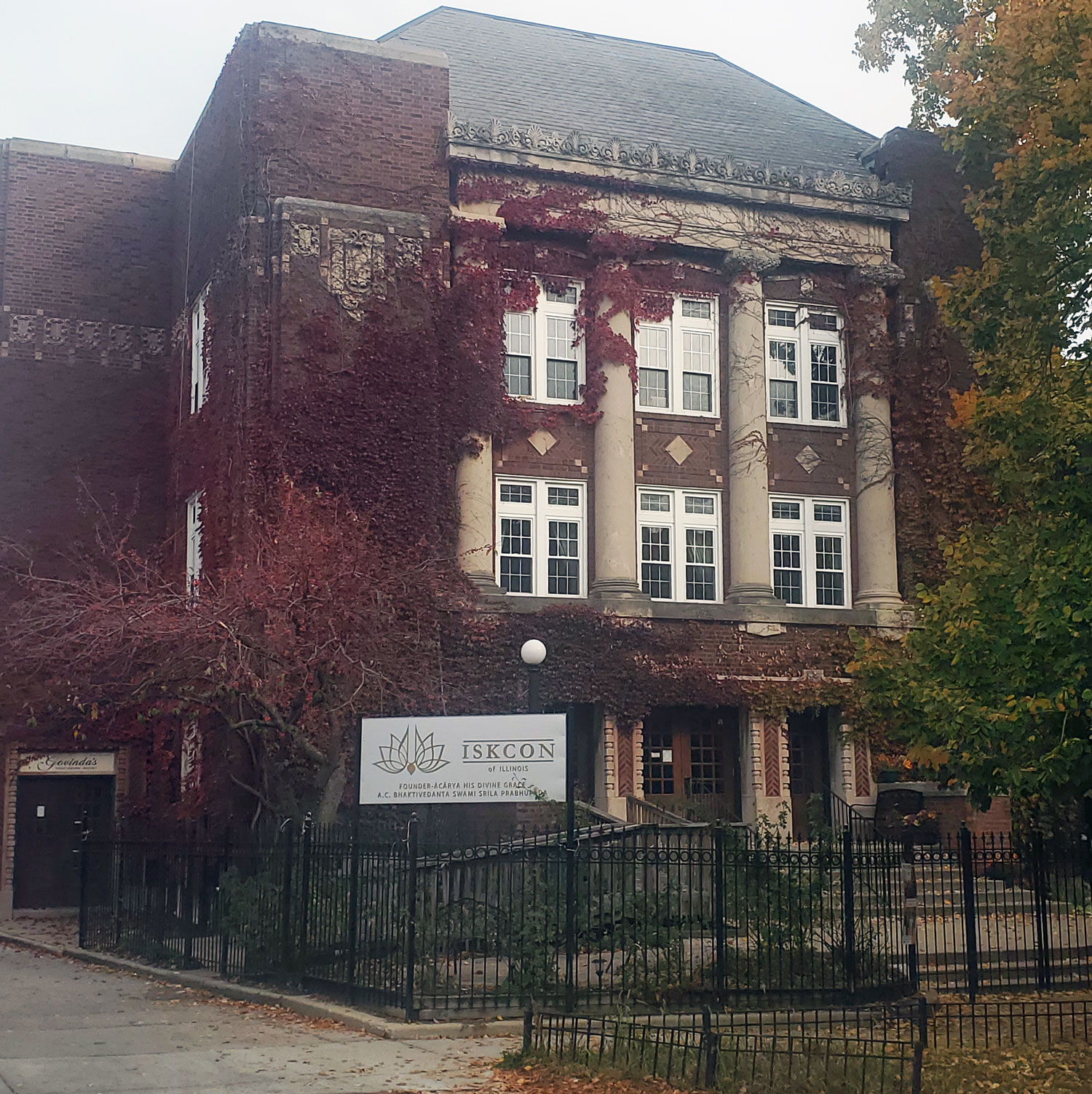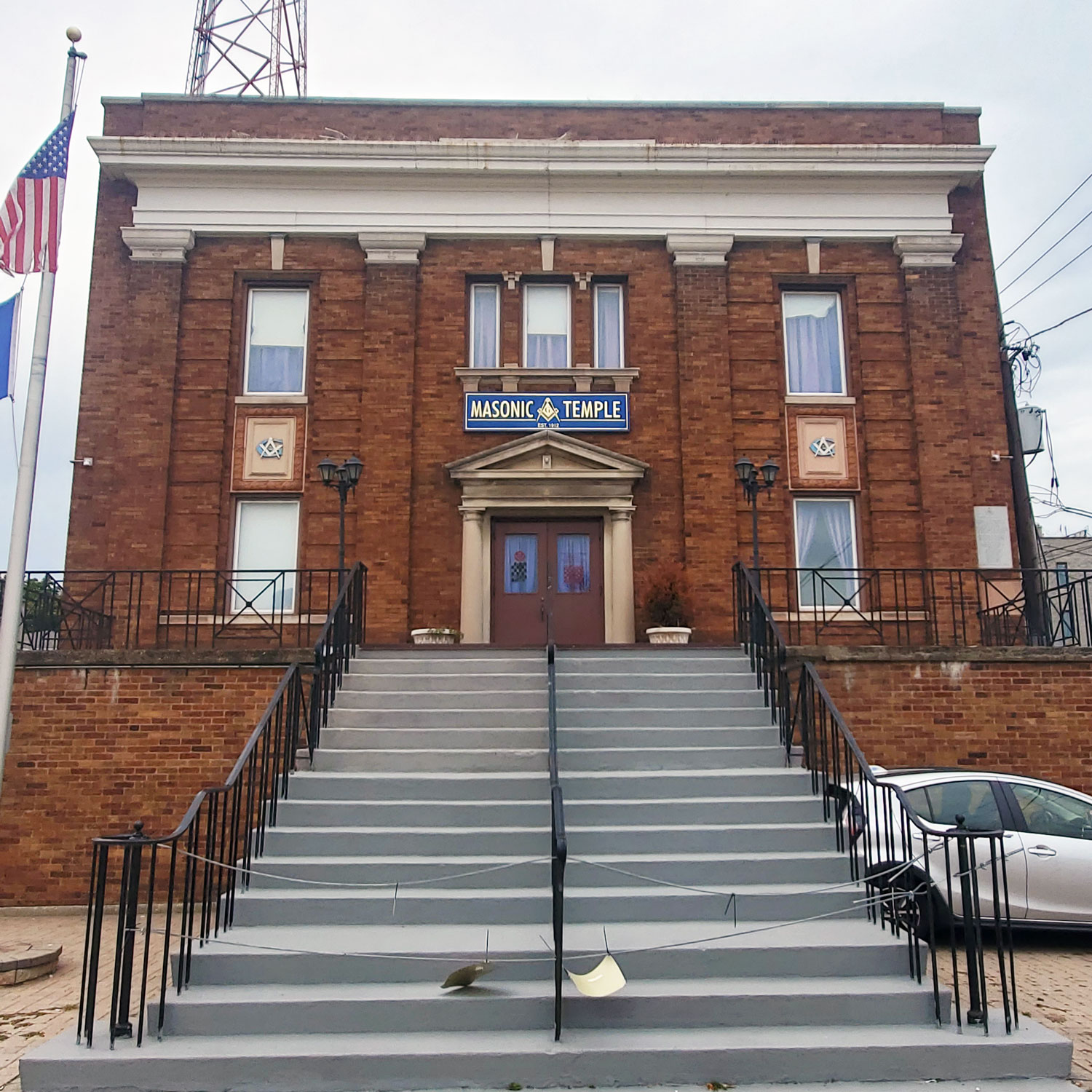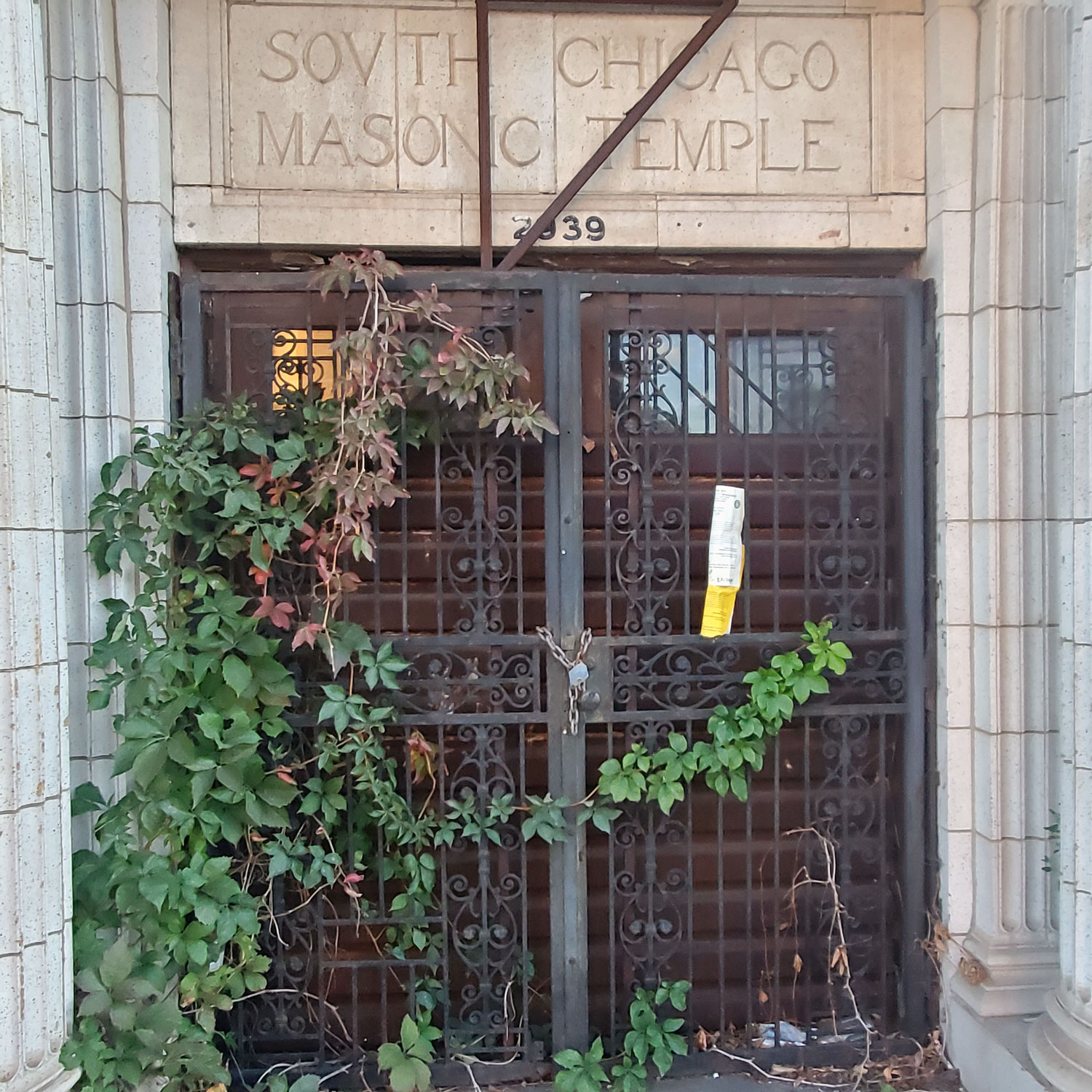The ERIS Brewery & Cider House occupies an imposing four-story red brick building at the corner of Irving Park Road and Tripp Avenue. Solid, sober, and bulky, it looks like an old elementary school or a police station. Look above the doors to see its actual provenance: a pair of compasses, enclosing the letter G. This was once the Myrtle Masonic Temple, built in 1910 and abandoned by the Freemasons in the early 1970s.
The old temple was occupied for decades by a Korean church, which allowed it to fall into disrepair. Some neighbors wanted to see it torn down, but ERIS’s managing partner, Michelle Foik, saw “a very good structure. The foundation of this building is amazing. You had experts building these. The Masons knew what they were doing. They’re just solid buildings, if you can figure out a way to convert them.”
ERIS transformed the old banquet hall into a bar. And it recognizes the building’s history by displaying Masonic emblems, including a safe, and an apron donated by a Mason who belonged to a lodge that met in the temple. The project won an Award for Adaptive Use from Landmarks Illinois.
“We want to be part of the community,” Foik said. “This was the origin of the community. The Chicago Women’s Society was part of the building.”
A hundred years ago, almost every community in Chicago had a masonic temple. A 1910 city directory listed dozens, including the grand 21-story Masonic Temple at Randolph and State streets, the city’s tallest building. Fraternal organizations were popular then, and no order was more popular — or prominent — than the Freemasons, whose membership has included 14 presidents, beginning with George Washington.
“If you go back to the year 1900, every third white Protestant adult male in the United States was a Freemason,” said local Masonic historian Martin Starr. There was no television or Internet then. Homes were small. Families were large. Dads wanted to get out of the house for a few hours in the evening. (The Catholic Church prohibited its members from becoming Masons, and African-Americans belonged to an order named after Prince Hall, a free Black abolitionist from Boston. Both groups are now represented in Masonic lodges.) In 1959, there were still 4.5 million Masons in the U.S. Now their numbers are down to about 1 million. Masons still meet at temples in Jefferson Park and Montclare, and at a Prince Hall lodge in Bronzeville, but almost every temple in that old city directory has been demolished, abandoned, or turned into something new. (This reporter is a member of Hesperia Lodge, which meets in Jefferson Park.)
The International Society for Krishna Consciousness, a.k.a. the Hare Krishnas, bought the Rogers Park temple at 1716 W. Lunt Ave., and converted the auditorium into a Hindu temple, with a statue of the sect’s founder, Swami Prahupada, and an altar whose tropical-bright murals are far more colorful than anything the white Protestant Masons would have designed. Adam, a Hare Krishna devotee, thinks an old Masonic temple is a perfect home for Hare Krishnas.
“The Hare Krishna movement is about the progression of humanity, and so is Freemasonry,” he said.
(A framed newspaper article about the temple’s 1917 opening describes the building as “a model of beauty and architectural skill,” and the auditorium as “a room 20 feet high, having a large stage to the north and a balcony to the west” — perfect for religious ceremonies.)
The Imperial Lodge Hall, at 1710 W. Cornelia Ave., is now a Zen Buddhist temple. A Knights of Pythias temple where Masons once met at 9231 S. Cottage Grove Ave. houses Bethlehem Star Church. The Armitage Baptist Church meets in an old Masonic Temple at 2451 N. Kedzie Blvd. in Logan Square.
The Ravenswood Masonic Temple, at 4601 N. Paulina Ave., was for many years the American Indian Center. The center moved to Albany Park in 2017 because it could no longer maintain the building. Now it’s the Paulina Street Lofts. The nearby Paul Revere Lodge at 1521 W. Wilson Ave., a wooden structure built in 1880, became the Chua Truc Lam Buddhist Temple after the Masons moved out in the 2000s. It was demolished in 2017, because Preservation Chicago could not find a buyer to preserve the building. The Constellation Temple, at 3900 N. Damen Ave., has become the Byron Lofts.
Some Masonic temples are still empty, decades after the Masons moved on. Vines grow over the padlocked gate of the South Chicago Masonic Temple, at 2939 E. 91st. “For Lease” and “Space Available” signs are stickered to the ornate facade of a temple at 1557 W. 47th St. in Back of the Yards.
There is an old temple that’s about to play a big role in Chicago history, though. The Medinah Temple, 600 N. Wabash Ave., was built by the Shriners in 1912 and filigreed with their Moorish imagery. Its double-balconied, 4,200-seat auditorium hosted the annual Shrine Circus. Not even the Shriners could keep it going, though. They moved out in 2000, and Bloomingdales moved its Home and Furniture Store in. Next year, the temple will become the temporary home of Chicago’s first casino, while Bally’s builds something permanent in River West.
The Freemasons aren’t what they used to be, or where they used to be, but they’ve sure left behind some fabulous architecture.



